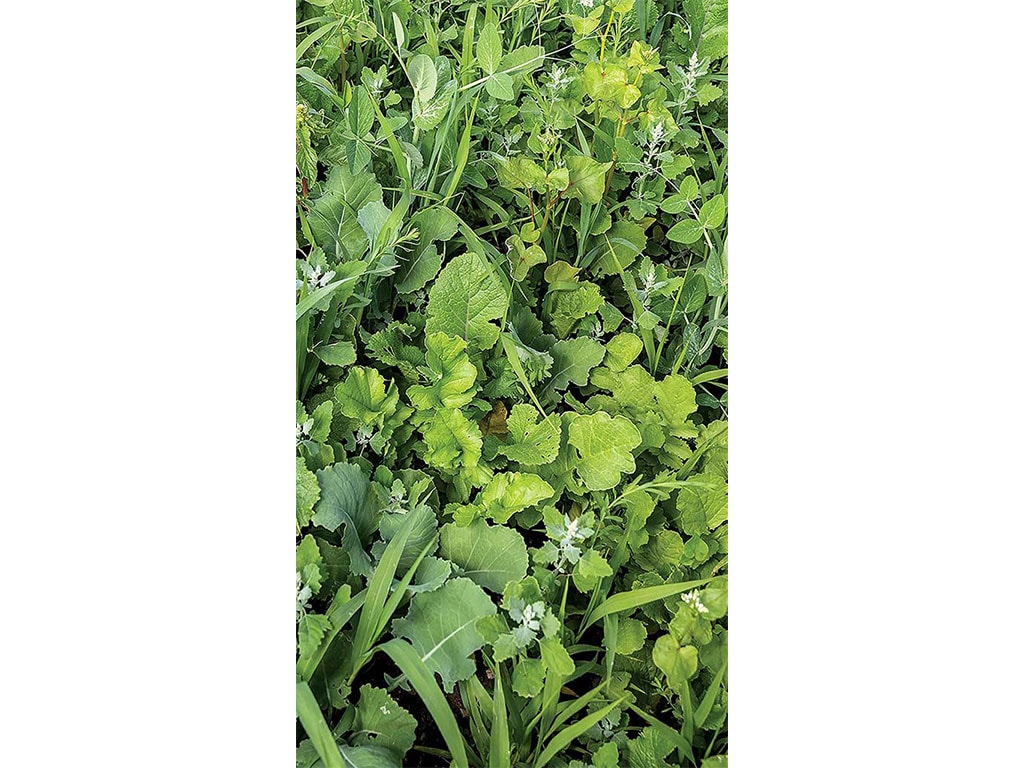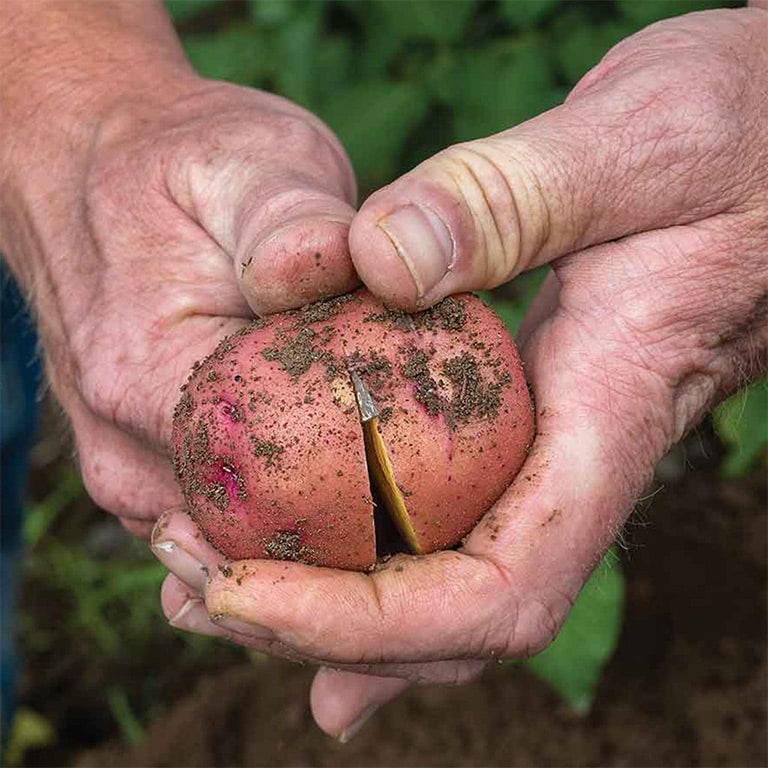Agriculture, Sustainability March 01, 2024
Ever Evolving Farmer
"I figured out how to grow peas with my potatoes. Cool! What else? I added chickling vetch. Cool! What else? I've got five companion species growing with my potatoes. Cool! What else?" The questions never stop coming for ever-innovating, ever-evolving, regenerative seed potato grower Brendon Rockey. As such, his farm is like the proverbial river—visitors will never step into the same field twice as the system is constantly flowing forward.
The Center, Colo., farmer has an insatiable drive to hone his farming system. Each advancement (or failure) is carefully analyzed to determine the 'why.'
Why did potato color improve when he started using buckwheat as a companion crop?
His theory is buckwheat mobilizes soil phosphorus (P). Insoluble P is often bonded to calcium (Ca). Research shows supplementing with Ca improves potato color. Therefore, it's possible when buckwheat root exudates mobilize P they also mobilize Ca, yielding twice the crop benefit.
"It's not enough to know there was a benefit. I have a strong desire to know why," Rockey says. "It's in my nature. I take stuff apart to see how it works."
This incessant curiosity helps percolate progress for Rockey and other innovators—progress that trickles from their farms converging and building until it floods the industry creating a fresh landscape for advancements in farming.
The flow of innovation—especially in the areas of soil health and regenerative farming—seems constant because there is no ultimate single solution.
"When you connect two dots, all of a sudden it brings more dots into focus you couldn't see before. Then you start working on those dots," says Jay Fuhrer, North Dakota NRCS soil health specialist (retired), early soil health champion, and regenerative farming innovator.
It's a mystery to be unraveled, he says. For Rockey, solving the puzzle is what keeps him excited to head to the field each day.
"Most people practicing regenerative agriculture like a challenge," Fuhrer says. They're system thinkers. They learn from the past, make moves, and plan three steps ahead for the future. "I wouldn't want to play chess against these individuals. They would make very difficult opponents!"
Above. Diverse covers help yield premium potatoes. Nitrogen-fixing nodules form robust clusters on the roots of fava beans, one of seven companion crops grown with Rockey's potatoes. When he first tried peas as a companion, everyone from family to neighbors to equipment engineers had their doubts, but curiosity prevailed. Grazing was a difficult add to Rockey's system as the San Luis Valley has little livestock, but he was driven to make it work to keep his system advancing.
Driving forward. Innovative types may love a good challenge, but with it comes struggle. It's not so much the science, weather, or equipment but the psychological and social components that hold many would-be innovators or adopters back.
"People are scared to death to try new things," Rockey says. They've made a living off of doing it the old way. The crop consultant says it's fine. What if they make a change and there's a disaster? Will they lose the farm or face ridicule? "It's tough when you feel like the neighbors are laughing at you."
The Brendon Rockeys and Jay Fuhrers of the world help solve this problem, too. Their curious minds give the puzzle more power than any judgment they may face. Eventually trying, and even failing, is normalized for them and those around them.
"I've been doing this so long and had enough success that nobody is laughing at me anymore," Rockey says. Even when an experiment goes wrong, the neighbors just ask what's happening and he responds, 'Oh, just trying something new.' Then they want to know what. They've become curious, too.
Rockey's greatest fear is failing without learning. "It's only a true failure if you don't look at what happened, figure out the why, and use the information to move forward with another try."
Not everyone who wants to change their system has to have a relentlessly curious mind and titanium skin. As long as the innovators have those traits, others can wait to jump in until those minds have teased out the whys and hows and are ready to share what they've learned.
And they do share.
"Our doors are wide open," Rockey says. An open door provides access to two rooms. When a fellow farmer comes to a presentation, calls him, or visits his farm, Rockey will have plenty questions of his own.
"I need something back. I need you to be doing something I've never done before or have a thought I haven't had," Rockey says. Companion innovating—like companion cropping—stimulates more robust growth.
Fuhrer inspired a forward jump for Rockey after a farm visit.
"Jay was in the area and dropped by. He took in everything I was doing and shared what he was doing with cover crop cocktails. By the time he left we had put together a 7-species mix to try the next year," Rockey says.
Having group support helps speed adoption. Rockey often asks those consulting him if they have local friends who are also interested. Soil health and regenerative farming practices aren't copy and paste. They have to be tweaked and fitted to a specific region and its conditions.
"Having 10 like-minded farmers all trying to accomplish a similar goal will move the process forward that much faster," Rockey says. Each can do something slightly different and learn from each other. "That's a great thing to be a part of."
A goal and a desire. Change is hard. In order to initiate change, there must first be desire.
"There isn't a slide in existence I can put in a presentation to generate desire to change. I can't give you that," Rockey says. But it's worth nurturing. "I find it to be a common trait among the most progressive farmers I know."
For Fuhrer a clear goal is also critical. "What's the objective," he says. Are you building stronger soil, increasing soil function, supporting soil life, or growing nutrient-dense food? "You have to have a strong view of where you're going."
Goals got Rockey started and helped him know when he'd made progress. He used a soil health checklist from the book The Biological Farmer by Gary Zimmer early on. When he'd finished that checklist and saw he'd already started adding his own points, he knew he was getting somewhere.
"I feel strongly that I haven't yet met my farm's full potential. There's still opportunity for improvement, but it's getting harder and harder to find those ideas," Rockey says, but he's still looking. "My system feels very dialed in, but I'm bored. I'll always keep looking for what else I can do." ‡
Read More

AGRICULTURE, EDUCATION
Fighting Food Insecurity
Getting food to the hungry takes a global approach.

AGRICULTURE, EDUCATION
Bright Farmers, Big City
Agriculture in the city that doesn't sleep.





